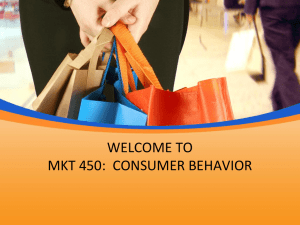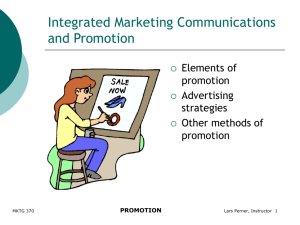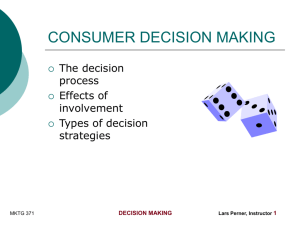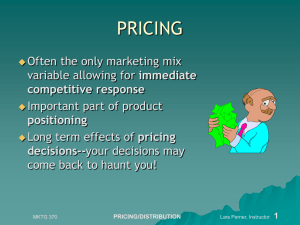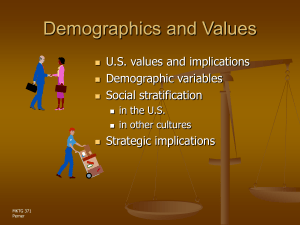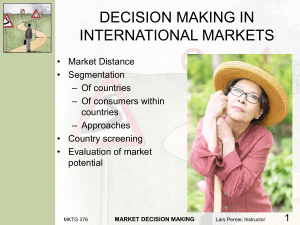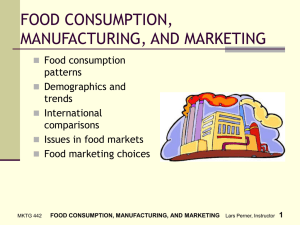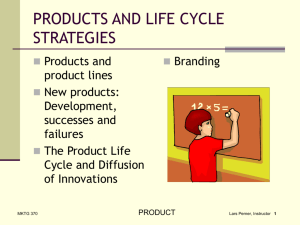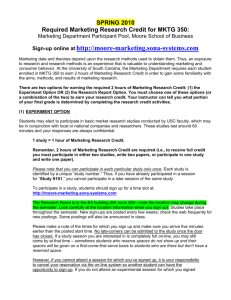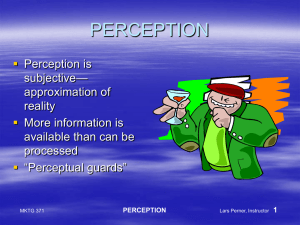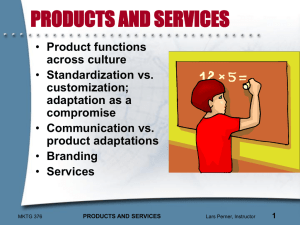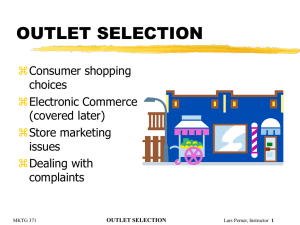Consumer Behavior
advertisement
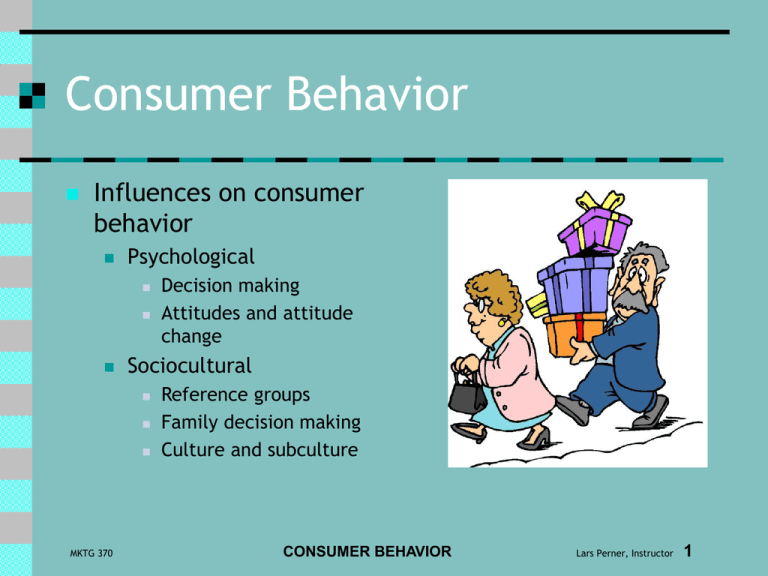
Consumer Behavior Influences on consumer behavior Psychological Sociocultural MKTG 370 Decision making Attitudes and attitude change Reference groups Family decision making Culture and subculture CONSUMER BEHAVIOR Lars Perner, Instructor 1 Consumer Problems and Recognition Consumer problem: Discrepancy between ideal and actual state--e.g., consumer: has insufficient hair is hungry has run out of ink in his or her inkjet cartridge Problems can be solved in several ways--e.g., stress reduction <----- vacation, movie, hot bath, medication MKTG 370 CONSUMER BEHAVIOR Lars Perner, Instructor 2 CONSUMER DECISIONS: Theory and Reality in Consumer Buying Problem Recognition Information Search Evaluation of Alternatives Purchase Postpurchase Evaluation/ Behaviors MKTG 370 CONSUMER BEHAVIOR Theory Complications Lars Perner, Instructor 3 Approaches to Search for Problem Solutions INTERNAL Memory Thinking EXTERNAL Word of mouth, media, store visits, trial MKTG 370 CONSUMER BEHAVIOR CATALOG Lars Perner, Instructor 4 Cost vs. Benefits of Search Market Characteristics Product Characteristics Consumer Characteristics Situation Characteristics MKTG 370 CONSUMER BEHAVIOR Lars Perner, Instructor 5 Decision Issues Types of decisions MKTG 370 Routinized response (e.g., gas, sodas) Limited problem solving (e.g., car service, fast food) Extended problem solving (e.g., new car, computer, medical procedures) Type of evaluation: CONSUMER BEHAVIOR Compensatory: Decision based on overall value of alternatives (good attribute can outweigh bad ones) Non-compensatory: Absolutely must meet at least one important criterion (e.g., car must have automatic transmission) Lars Perner, Instructor 6 Variety Seeking and Impulse Buying Variety seeking » need varies among consumers by optimal stimulation level (OSL) » Use innovativeness “Don’t give me that same old cola, that same old cola-I want a rock’n’roller!” MKTG 370 Impulse purchases » Motivation » Consequences CONSUMER BEHAVIOR Lars Perner, Instructor 7 Psychological Influences Motivation Personality Perception MKTG 370 Perceived risk Learning Attention and competition for attention Selective perception Subliminal influence? Change in behavior May or may not be conscious Values, beliefs, and attitudes Lifestyle—e.g., VALS2 CONSUMER BEHAVIOR Lars Perner, Instructor 8 Attitude Change Strategies Change Affect Classical conditioning Attitude toward the ad Mere exposure Change behavior (e.g., sampling) Change Belief Component MKTG 370 Change existing beliefs Change importance of attributes Add beliefs Change ideal CONSUMER BEHAVIOR Lars Perner, Instructor 9 One-sided vs. two sided appeals One-sided: only saying what favors your side Two-sided: stating your case but also admitting points favoring the other side MKTG 370 Why is this effective? CONSUMER BEHAVIOR Lars Perner, Instructor 10 Sociocultural Influences Personal Influence Opinion leadership Word of mouth and rumors Reference groups MKTG 370 Culture Subculture Associative: “We’re the Pepsi generation…” Dissociative: “It’s not your father’s car.” Aspirational CONSUMER BEHAVIOR Lars Perner, Instructor 11 Potential Family Life Cycle Stages YOUNG SINGLE YOUNG COUPLE EMPTY NEST I/II FULL NEST I/II/III SINGLE PARENT OLDER SINGLE BLENDED MKTG 370 CONSUMER BEHAVIOR Lars Perner, Instructor 12 Economic/Marketing Implications of Household Cycles Income tends to increase with time But children/ obligations add cost Divorce MKTG 370 increases costs may change income distribution marriage Product demand due to CONSUMER BEHAVIOR singles with low expenses new couples divorced families children empty nesters --> more income Lars Perner, Instructor 13 Household Decision Making Roles/influence Information gatherers/holders Influencers Decision makers Purchasers Users MKTG 370 CONSUMER BEHAVIOR Lars Perner, Instructor 14 More Sociocultural Influences Social class In the U.S. Subculture Positioning strategies: “Upward Pull” “At Level” Ethnic Generational Regional Religious groups In other cultures Culture: “Share meanings” MKTG 370 CONSUMER BEHAVIOR Lars Perner, Instructor 15 Organizational Buyers Types MKTG 370 Industrial Reseller Government and non-profit organizations Characteristics CONSUMER BEHAVIOR Greater involvement Bureaucracy Long term relationships Lars Perner, Instructor 16 The Means-End Chain Aim promotion/ positioning at higher levels of chain! Self-esteem Values Feeling of power Consequences Attributes Performance Fast acceleration Large engine MKTG 370 CONSUMER BEHAVIOR Lars Perner, Instructor 17
